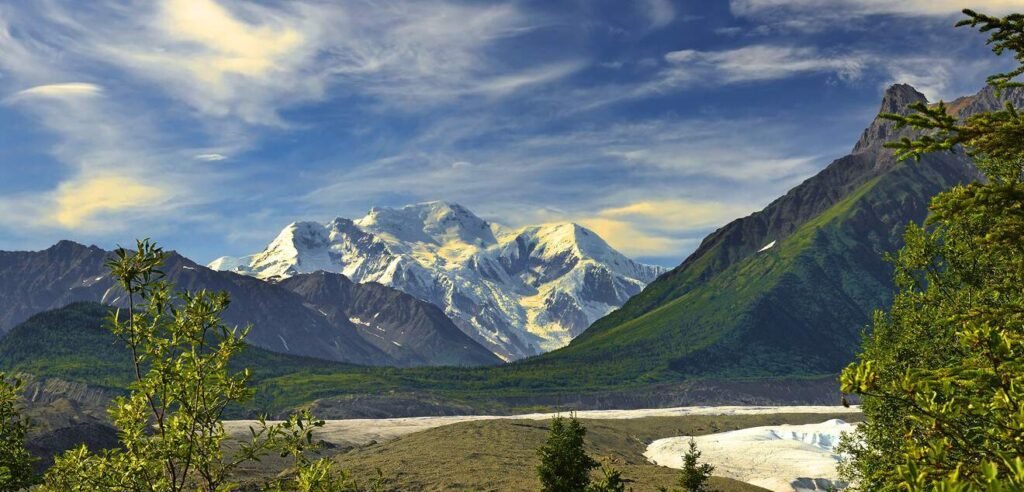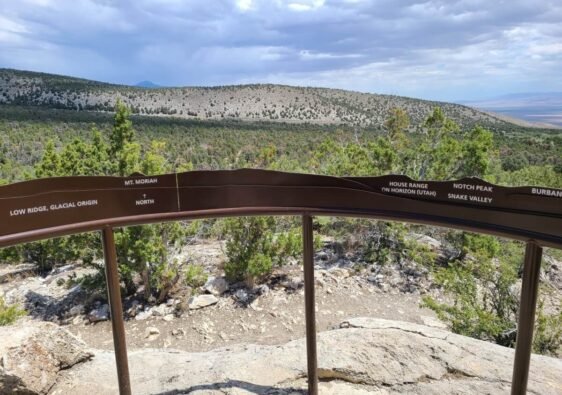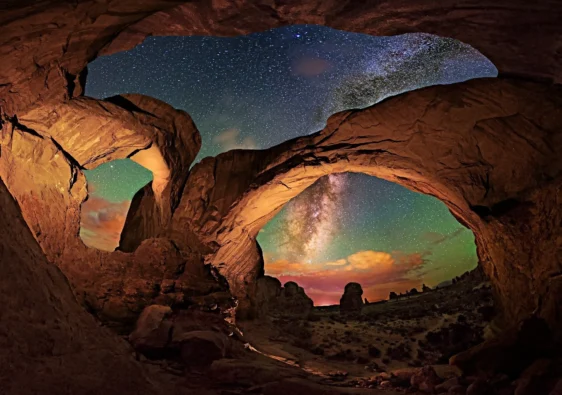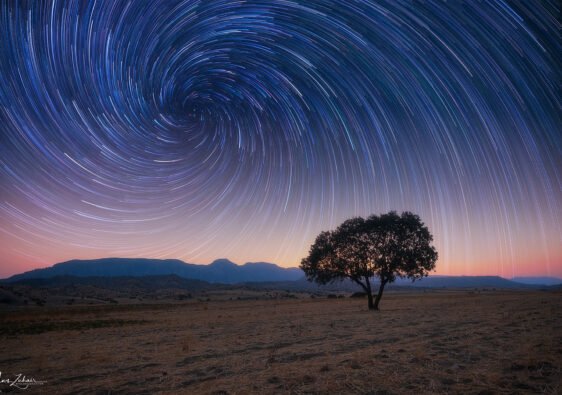
Introduction to Wrangell-St. Elias National Park
Wrangell-St. Elias National Park, spanning over 13 million acres, proudly holds the title of America’s largest national park. Established in 1980, this vast expanse of wilderness is a true testament to the grandeur of nature, offering visitors an unparalleled opportunity to appreciate an array of natural wonders. The park showcases a stunning variety of ecosystems, where some of the most rugged mountains in North America converge with ancient glaciers, forming a breathtaking landscape that captivates all who venture within its borders.
Home to an astonishing diversity of wildlife, Wrangell-St. Elias is a sanctuary for numerous species. Visitors may encounter Dall sheep ascending steep mountainsides, grizzly bears roaming the valleys, and an abundant array of birds that adorn the skies. This biological richness is supported by the park’s unique geographical features, which create various habitats conducive to thriving wildlife populations. From alpine meadows bursting with wildflowers in summer to the serene, icy calm of glacial lakes, every corner of the park offers an encounter with nature that feels both exhilarating and grounding.
In addition to its breathtaking topography and varied fauna, Wrangell-St. Elias serves as a gateway to the night sky and the mesmerizing aurora borealis. The park’s remote location away from urban light pollution presents one of the best venues for experiencing the northern lights, drawing stargazers and photographers alike. As night falls, the celestial dance of colors illuminates the expansive views, providing a cosmic theater that complements the park’s daytime beauty. This intertwining of earthly and celestial wonders creates a destination that is not only visually stunning but also profoundly inspiring.
The Magic of the Northern Lights
The aurora borealis, commonly known as the northern lights, is one of nature’s most mesmerizing phenomena. These spectacular light displays, characterized by shifting colors of green, purple, blue, and red, occur when charged particles from the sun collide with gases in the Earth’s atmosphere. This interaction produces light that dances across the night sky, creating a celestial spectacle that has fascinated humans for centuries.
The science behind the northern lights involves solar activity. When solar winds carry these charged particles towards Earth, they interact primarily with oxygen and nitrogen molecules in the atmosphere. The altitude at which the interaction occurs often determines the color of the light observed. For instance, higher altitudes typically produce red and purples, while lower altitudes yield vibrant greens. Factors such as solar wind intensity and atmospheric conditions significantly influence the visibility of these lights.
Optimal viewing conditions for the aurora borealis include clear, dark nights, away from city lights, and preferably during winter months when the nights are longest. Locations closer to the polar regions, such as Wrangell-St. Elias National Park, provide superb opportunities for witnessing these enchanting displays. Many visitors flock to this national park, seeking to experience the celestial dance that characterizes the Arctic night sky.
Historically, indigenous peoples of the Arctic regions have formed deep spiritual connections with the northern lights. For instance, some tribes believed that the aurora borealis represented the spirits of their ancestors or served as messages from the divine. These cultural interpretations add a layer of meaning to the natural phenomenon, showcasing how the northern lights have inspired stories and traditions throughout generations.
Reasons to Visit in Winter
Visiting Wrangell-St. Elias National Park during winter offers an unparalleled opportunity to experience the pristine beauty of this vast wilderness while simultaneously witnessing the breathtaking spectacle of the northern lights. The winter months present a unique allure, when the chances of encountering the aurora borealis reach their peak, making for unforgettable moments beneath the shimmering night sky. The park transforms into a magical landscape, where snow-clad peaks and frozen rivers create picturesque backdrops, enhancing the experience of this cosmic theater.
Moreover, winter in Wrangell-St. Elias presents a myriad of outdoor activities that cater to both adventure seekers and nature enthusiasts. Snowshoeing through expansive trails offers an intimate exploration of the park’s serene environment, while skiing provides adrenaline-fueled descents down glistening slopes. For those with a taste for adventure, ice climbing on frozen waterfalls allows for a thrilling challenge set against a stunningly beautiful backdrop. These activities not only promote physical engagement with the park but also deepen the connection to the breathtaking natural world.
The quieter landscapes during winter create an atmosphere of solitude that is often hard to find during the busier seasons. With fewer visitors traversing the snowy paths, guests can enjoy a more personal encounter with nature, allowing for moments of reflection and peace. The stillness of the winter scenery fosters a deeper appreciation for the wilderness, revealing its intricate details that are often overlooked in other seasons. This tranquility, combined with the night sky’s vibrant displays, makes winter an exceptional time to visit Wrangell-St. Elias National Park for those seeking to experience the wonder of the great outdoors in one of the most beautiful settings on Earth.
Best Locations for Aurora Viewing
Wrangell-St. Elias National Park, known for its vast wilderness and stunning landscapes, offers a plethora of prime spots for viewing the mesmerizing aurora borealis. These locations provide the necessary dark skies, minimal light pollution, and breathtaking backdrops for experiencing the northern lights in all their glory. The first notable site is the McCarthy Road, which extends deep into the park. Traveling along this remote road leads to several vantage points where one can witness the aurora dance across the sky, often framed by the rugged peaks of the surrounding mountains.
Another highly recommended location is the Kuskulana River, which not only offers unique opportunities to photograph the northern lights reflecting off the water’s surface but also showcases the incredible geological features of the area. To access this site, visitors must be prepared for a short hike, which can be particularly rewarding, as the sounds of nature accompany the spectacular light show. It is advisable to check the trail conditions prior to your visit, especially during winter months.
The Nabesna Road is also worth highlighting, as it leads to less frequented areas of the park, providing seclusion and tranquility, perfect for experiencing the auroras. Visitors should ensure their vehicles are adequately prepared for winter travel, and it is beneficial to carry extra supplies such as food, warm clothing, and navigation tools.
Lastly, the town of Chitina serves as a convenient base for aurora hunters, offering nearby locations that boast excellent visibility. When planning your trip to these illuminated locations, safety should be paramount; inform someone of your itinerary, travel in groups, and equip yourself with proper gear to withstand the harsh conditions. With care and preparation, Wrangell-St. Elias National Park can become a celestial playground for those eager to witness the enchanting northern lights.
The Milky Way and Stars Above
As night falls over Wrangell-St. Elias National Park, the absence of artificial light reveals a pristine canvas where the celestial wonders come to life. The Milky Way, a magnificent swirl of stars, becomes a dominant feature in the clear sky, showcasing the sheer beauty that awaits those who venture into this untouched wilderness. The park’s remote location ensures dark skies that are crucial for appreciating the depth and complexity of the universe. For stargazing enthusiasts, this is an unparalleled opportunity to witness the splendor of countless stars, planets, and celestial phenomena.
To make the most of your stargazing experience, it is advisable to plan your visit during the new moon phase when the moonlight is at its lowest. This creates ideal conditions to observe the brilliance of the Milky Way. Additionally, picking a higher vantage point can enhance visibility while allowing for expansive views of the sky. For photography enthusiasts, a good camera and a sturdy tripod are essential for capturing long-exposure images of the night sky. Experimenting with various exposure settings will enable you to achieve stunning photographs that highlight the vibrant colors and intricate patterns formed by stars and cosmic dust.
The significance of dark skies extends beyond mere aesthetics; it plays a crucial role in scientific research and conservation. Dark environments help local wildlife thrive and preserve the natural ecosystem. For astrophotography enthusiasts, Wrangell-St. Elias National Park offers unparalleled access to rare celestial events, making it an ideal destination for capturing the perfect shot of the night sky. Whether you are gazing at the Milky Way or documenting the stars above, the park offers a cosmic theater that is both inspiring and mesmerizing, solidifying its place as a must-visit destination for anyone enamored with the great celestial expanse.
Wildlife in Winter: A Different Perspective
Wrangell-St. Elias National Park, with its vast and rugged landscapes, serves as a remarkable sanctuary for wildlife during the winter months. The park’s winter scenery, characterized by blankets of snow and the stunning backdrop of the northern lights, offers a unique perspective on the adaptations of local fauna. Animals such as moose, caribou, and foxes exhibit remarkable survival strategies that are crucial for thriving in the harsh winter environment.
Moose, for instance, rely on their height to access food sources typically buried under snow. During winter, these large mammals dig through the snow to reach the twigs and bark of willows and aspens, which provide essential nutrients. Their adaptations not only enable them to forage effectively but also help them conserve energy, an essential factor given the limited resources available during these colder months.
Caribou, on the other hand, demonstrate the stunning natural instinct of migration. They journey over vast distances to reach their winter grazing grounds, where they rely on lichen, an important dietary component that is not easily accessible in other seasons. Their movements are synchronized with the changing environment, ensuring that they find adequate nutrition despite the challenging conditions.
Additionally, Arctic foxes exhibit remarkable adaptations, particularly with their thick fur and ability to change color with the seasons. During winter, their white coats blend seamlessly into the snowy terrain, providing excellent camouflage against predators and enhancing their hunting success. This seasonal transformation plays a significant role in their survival, allowing them to thrive even as temperatures plummet.
Wildlife viewing in Wrangell-St. Elias National Park during winter is an enchanting experience. The contrast of wildlife amid striking snowy landscapes and dancing auroras creates an unforgettable spectacle. Observing these animals as they navigate the challenges of winter reveals not only their resilience but also the intricate dance of nature at this time of year.
Cultural Connections: Indigenous Heritage and Stories
The rich tapestry of indigenous heritage in Alaska significantly shapes the cultural landscape of Wrangell-St. Elias National Park. Home to various indigenous groups, including the Ahtna, Eyak, and Tlingit peoples, this region has been a vital part of their identity for thousands of years. Each of these communities possesses unique traditions and stories that reflect their profound relationship with the land and the cosmic spectacle of the northern lights.
For many indigenous peoples, the aurora borealis is not merely a natural phenomenon but a deeply woven thread in their cultural narratives. Traditional stories often describe the northern lights as spirits dancing in the sky, guiding souls or illuminating events of significance. These tales capture not only the beauty of the auroras but also impart moral lessons, explanations of natural events, and reflections on the community’s history. Elders pass down these stories, ensuring that the knowledge and cultural continuity remain alive among younger generations.
The interconnectedness of the land, sky, and indigenous culture plays a vital role in contemporary efforts to preserve the natural and cultural heritage of Wrangell-St. Elias National Park. With the park’s administration increasingly recognizing the importance of indigenous perspectives, collaborations are being forged to ensure that the heritage of the area is honored and integrated into conservation strategies. This partnership strives to uphold the stories and traditions of the indigenous peoples, promoting an understanding that guardianship of the land is a shared responsibility.
As visitors explore the awe-inspiring landscapes of the park, they are invited to engage with its rich cultural history, gaining insights into the indigenous peoples’ perspectives. By appreciating these narratives, visitors can foster a deeper connection to the natural wonders they experience while acknowledging those who have historically walked these lands long before.
Travel Tips for Adventurers
Embarking on an adventure in Wrangell-St. Elias National Park during the winter months requires careful preparation to fully enjoy the stunning natural beauty under the Northern Lights. First and foremost, appropriate gear is vital. Given the park’s alpine environment, visitors should invest in high-quality winter clothing that is not only warm but also moisture-wicking. Insulated jackets, thermal layers, waterproof outer shells, and sturdy winter boots are essential. Additionally, having accessories such as gloves, hats, and neck gaiters can help in combating the biting cold.
Engaging local guides can significantly enhance your experience in the park. Professional guides have intricate knowledge of the terrain and can provide valuable insights into the best viewing spots for the auroras. They can also ensure safety while navigating potentially hazardous areas, particularly during winter where snow-covered trails can be deceptive.
Weather conditions in Wrangell-St. Elias during winter can be unpredictable, with temperatures often dropping well below freezing. Visitors should stay informed about the weather through reliable forecasts, as it can affect travel plans and safety. Moreover, it is crucial to note that winter days are short, so planning outdoor activities with adequate daylight is important.
In terms of accommodations, options vary from remote cabins to lodges that cater to winter sports enthusiasts. Ensure to make reservations in advance, especially during peak aurora-watching season, as popular spots tend to fill quickly. Furthermore, understanding the park’s regulations and ensuring compliance with Leave No Trace principles can help preserve the pristine environment for future visitors while ensuring a safe experience. Visitors should familiarize themselves with park rules regarding wildlife and campfire restrictions, which can protect the park’s delicate ecosystem.
By focusing on these travel tips, adventurers can prepare thoroughly, enabling them to embrace the tranquility and magnificence of Wrangell-St. Elias National Park in winter, creating lasting memories under its cosmic theater.
Conclusion: Embrace the Cosmic Theater
Experiencing the northern lights is an enchanting journey that transcends mere observation, allowing one to connect with the immense beauty of nature. Wrangell-St. Elias National Park serves as an ideal backdrop for this awe-inspiring spectacle, as its expansive wilderness enhances the celestial performance. This park not only offers a glimpse of the shimmery auroras but also presents visitors with a chance to explore a landscape rich in history, adventure, and tranquility.
The vastness of the park, marked by towering mountains, deep valleys, and ice fields, invites exploration and discovery. Each adventurer can find their own unique experience, whether trekking through the rugged terrain, engaging in winter sports, or simply enjoying the quiet majesty of the surroundings. Amid the stillness, the northern lights flicker like an artist’s brush, painting the night sky with vibrant colors that evoke a profound sense of wonder. Observing this cosmic display reinforces the connection between humanity and the cosmos; it inspires one to appreciate the fleeting moments that nature offers.
As you ponder your next expedition, consider visiting Wrangell-St. Elias National Park to witness the breathtaking interaction between light and land. These moments under the northern lights are sure to create lasting memories that will resonate long after you have returned home. We invite you to share your own experiences, reflect on your adventures, or plan a trip to this natural wonder. Embrace your adventurous spirit and immerse yourself in the serene yet powerful aura of this cosmic theater; its wonders await your discovery.



